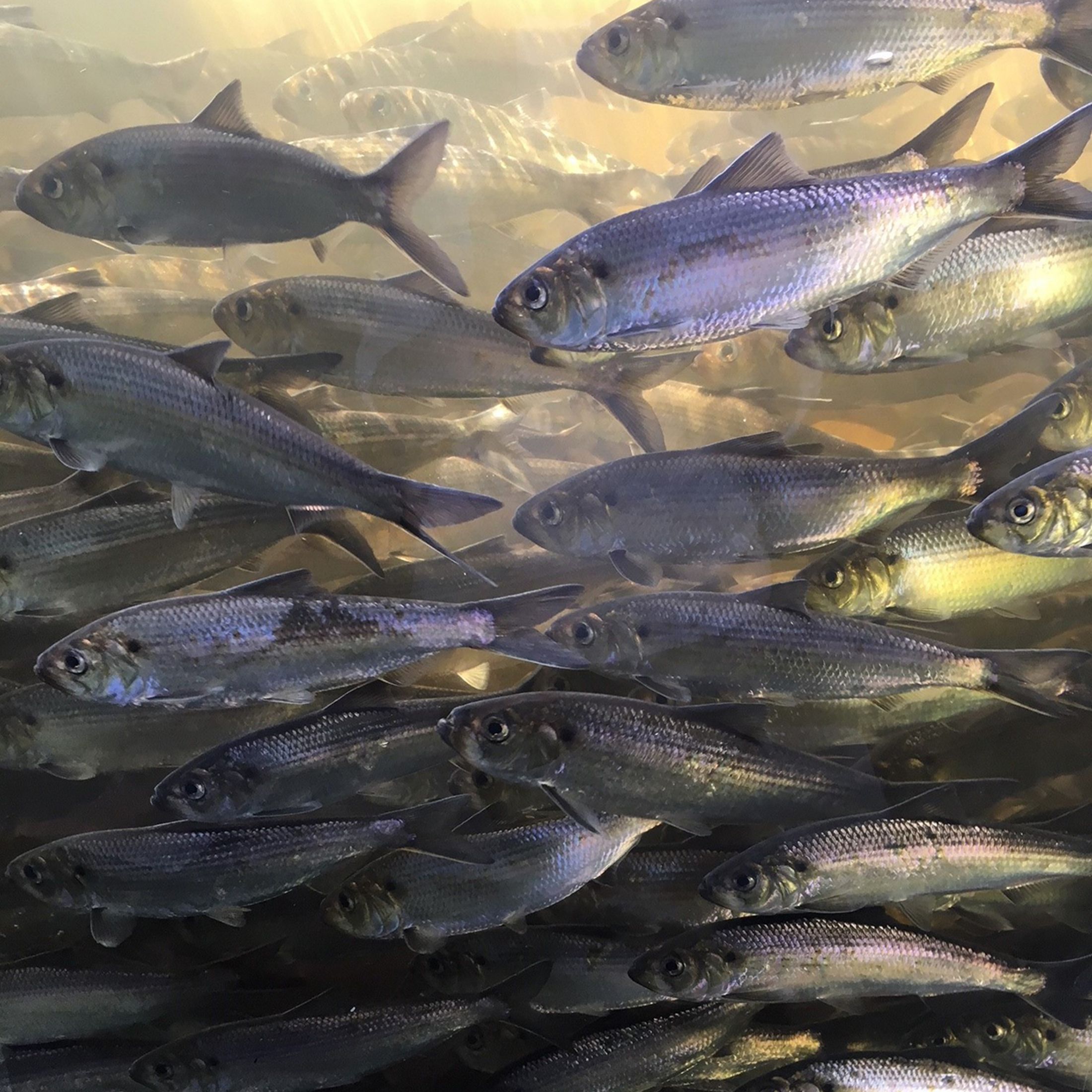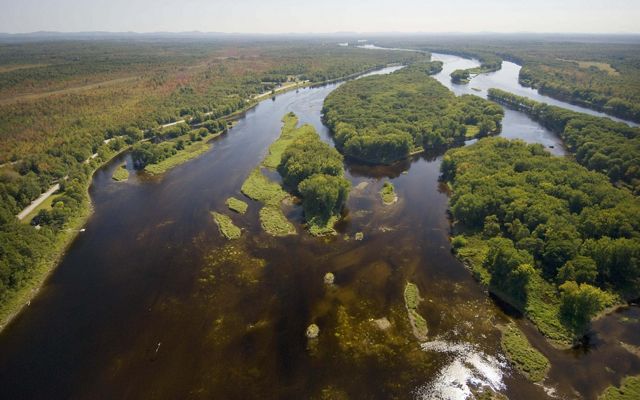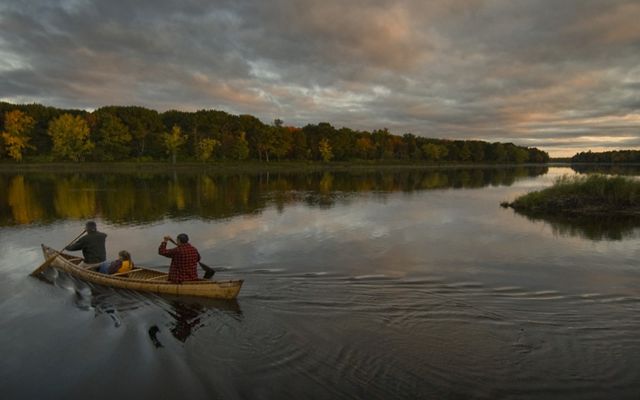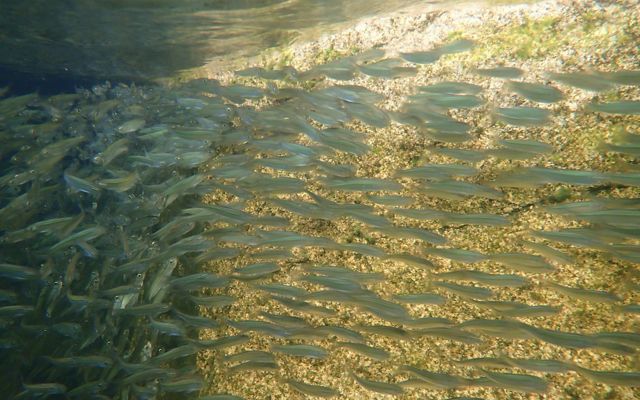
Rivers Reborn: A Remarkable Recovery Continues in Maine’s Rivers
The Infrastructure Investment and Jobs Act is helping reconnect and restore fish passages in the Penobscot watershed
Alewives may soon be returning to Maine’s Mattamiscontis Lake. For the Penobscot Nation, the Indigenous people who have fished the waters of the North Woods for 12,000 years, the return of these silvery slivers of foot-long fish is a reason to celebrate.
World Fish Migration Day
May 25, 2024 will mark the 6th World Fish Migration Day (WFMD), a biennial event The Nature Conservancy helped found in 2014. WFMD is a global celebration to create awareness about the importance of migratory fish and free-flowing rivers. The WFMD website includes a list of scheduled events.
In the Penobscot language, “Mattamiscontis” translates to “place of many alewives,” but these fish, which spawn in fresh water yet spend most of their lives in the sea, have been scarce in the years since Europeans brought mill dams, hydropower, logging roads and industrial pollution to northern Maine.
Large dam removals a decade ago on the Penobscot River—the river into which Mattamiscontis Stream flows—have greatly increased the movement of alewives, shad and other river herring species. Alewife populations alone grew from near zero in 2010 to six million in 2023 on the Penobscot.
But big dams are not the only obstacles to fish passage, explained Dan McCaw, fisheries biologist for the Penobscot Nation. The job of removing narrow culverts, small dams and other hindrances—work that recently received a boost of $2.9 million from the Infrastructure Investment and Jobs Act (IIJA)—has allowed the fast-growing population of alewives to return to Maine’s interior, including the Penobscot tribal lands, where the people and the fish have been connected for uncounted generations.

How the IIJA is Supporting the Penobscot River
-
$2.9M
The IIJA awarded millions to remove narrow culverts and small dams from the Penobscot River
-
6M
The 2023 alewife spawning run is up to six million on the Penobscot (up from near zero in 2010)
-
$7.6M
In addition to the recent funding boost, the IIJA has already provided millions for restoring fish passages in Penobscot River tributaries
Quote: Dan McCaw
When these fish get into the smaller streams and there are hundreds of thousands of them, you can’t miss seeing them. When I first saw them in these numbers, it was a mind-blowing, guttural emotional response.



Restoring the Penobscot River
TNC has been working with the Penobscot Indian Nation and several nonprofits to restore the Penobscot River for over 15 years. As a result, thousands of miles of habitat along the Penobscot and its tributaries has been re-opened for 12 native species of sea-run fish. Wildlife species and human communities in and along the river are also experiencing benefits including skyrocketing fish runs, renewed recreational opportunities and restored connections throughout the watershed. Learn more about our Penobscot River restoration work.
“When these fish get into the smaller streams and there are hundreds of thousands of them, you can’t miss seeing them,” McCaw says. “When I first saw them in these numbers, it was a mind-blowing, guttural emotional response.”
The sea-run fishes, including river herring, American eel and Atlantic salmon, were the dominant fish species in the Penobscot River drainage when Europeans arrived in the 1600s. Early on, these fish were smoked and sold for food, McCaw says, making them an important part of the colonial economy. But as industrialization took hold, more than 100 dams were built along the Penobscot and its tributaries, blocking spawning pathways. By the 1960s, most of these fish had disappeared from Maine’s interior waters. The Penobscot people last harvested wild salmon from the river in 1988.
The restoration of the Penobscot River and its tributaries has been a 15-year effort started by the Penobscot Nation and PPL-Maine, an electric utility that produces hydropower. Since 2004, this effort has been led by the Penobscot River Restoration Trust, an innovative non-profit partnership that includes the Penobscot Nation, PPL-Maine, conservation groups and state and federal agencies. The Nature Conservancy joined the partnership in 2006.

Because of this project, thousands of miles of river habitat along the Penobscot and its tributaries have improved access for sea-run fish. About half of the Penobscot Nation’s 128,000 acres of tribal trust land is in the Penobscot River watershed, where a legacy of industrial logging has left the landscape scarred by a vast network of roads. The culverts that run under these roads create physical barriers and form small ponds that warm the water, McCaw says. “Most fish do not like to swim through a one-foot-wide culvert,” he says. “And it pinches the stream, increasing velocities—making it difficult to swim upstream.”
Since 2012, partners in the watershed have focused on continuing the momentum for restoration that was started by the Penobscot River Restoration Project. The Penobscot Nation has restored passageways at 23 sites across the watershed, re-connecting the cool headwater tributaries to the Penobscot main stem. IIJA funding is being used to build five new fish passage projects and finish restoring connectivity to all of Mattamiscontis Stream, at the center of tribal trust land. The grant is part of a $2.9 million IIJA tribal fish passage grant to the Penobscot Nation and works in concert with a $7.6 million grant to the Atlantic Salmon Federation from the National Oceanic and Atmospheric Administration and in partnership with The Nature Conservancy.
The alewives are no longer regularly eaten, but instead are important to the Maine coastal economy as bait for lobster traps, although the Penobscot people have recently begun using the fish again for fertilizer in their gardens, a traditional use of the fish.
“A lot of people tell me, you must be thrilled to see these gains,” McCaw said. “And we’re better now than we have been, but we’ve just turned the corner. We’ve taken the first steps, but we have a massive set of challenges ahead of us, still.
“The Penobscot River still has dozens and dozens of dams with poor or no fish passage, and the largest hydroelectric dams still do not prevent millions of fish from passing through their turbines each year,” he said.
Quote: Dan McCaw
The Penobscot River still has dozens and dozens of dams with poor or no fish passage, and the largest hydroelectric dams still do not prevent millions of fish from passing through their turbines each year.
Before colonization, river herring populations once reached tens of millions, so work remains to restore these fish. And the reestablishment of alewives and other river herring is crucial to restoring other sea run species, including Atlantic salmon, a fish that has been harvested by the Penobscot people for at least 10,000 years. Due to the alteration of habitat, the inaccessibility of the highly productive West Branch of the Penobscot and the limitations of fish passage systems at remaining dams, salmon populations have not recovered as quickly as the herring.
And, according to recent research by the U.S. EPA, many of the fish that do make it up the river are contaminated with mercury and other industrial pollutants, a legacy that makes it difficult for the Penobscot to exercise their cultural and sustenance fishing rights on the river.
Still, when the herring make their way into the Mattamiscontis Stream watershed, McCaw will find reason to celebrate.
Quote: Dan McCaw
The reconnected habitat restores the natural rhythms and cycles of the river, and these sea-run herring are now free to move through the small system of Mattamiscontis Stream as they did for millennia.

Take Action
Government action on conservation is at an all-time high. We need to keep that going. Tell Congress to protect conservation funding today.


Stay in the Loop
Get conservation stories, news and local opportunities from where you live.





